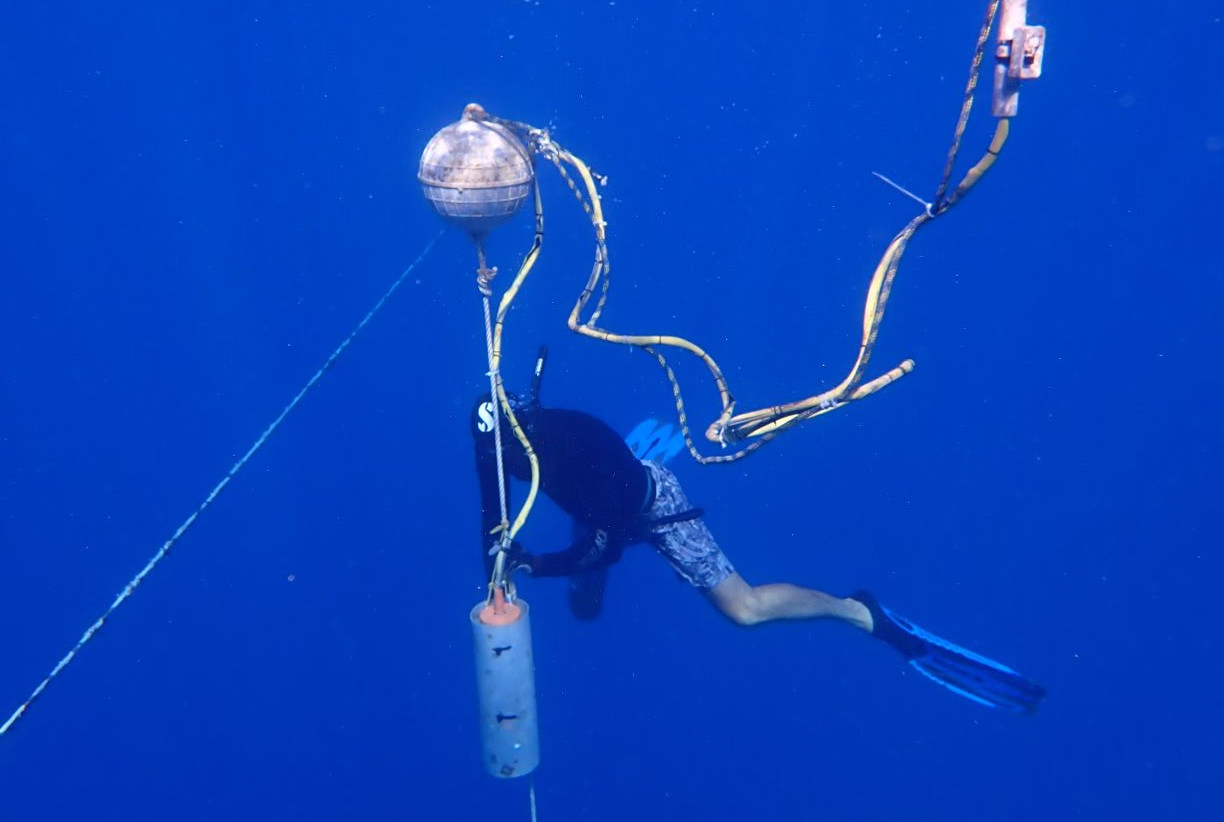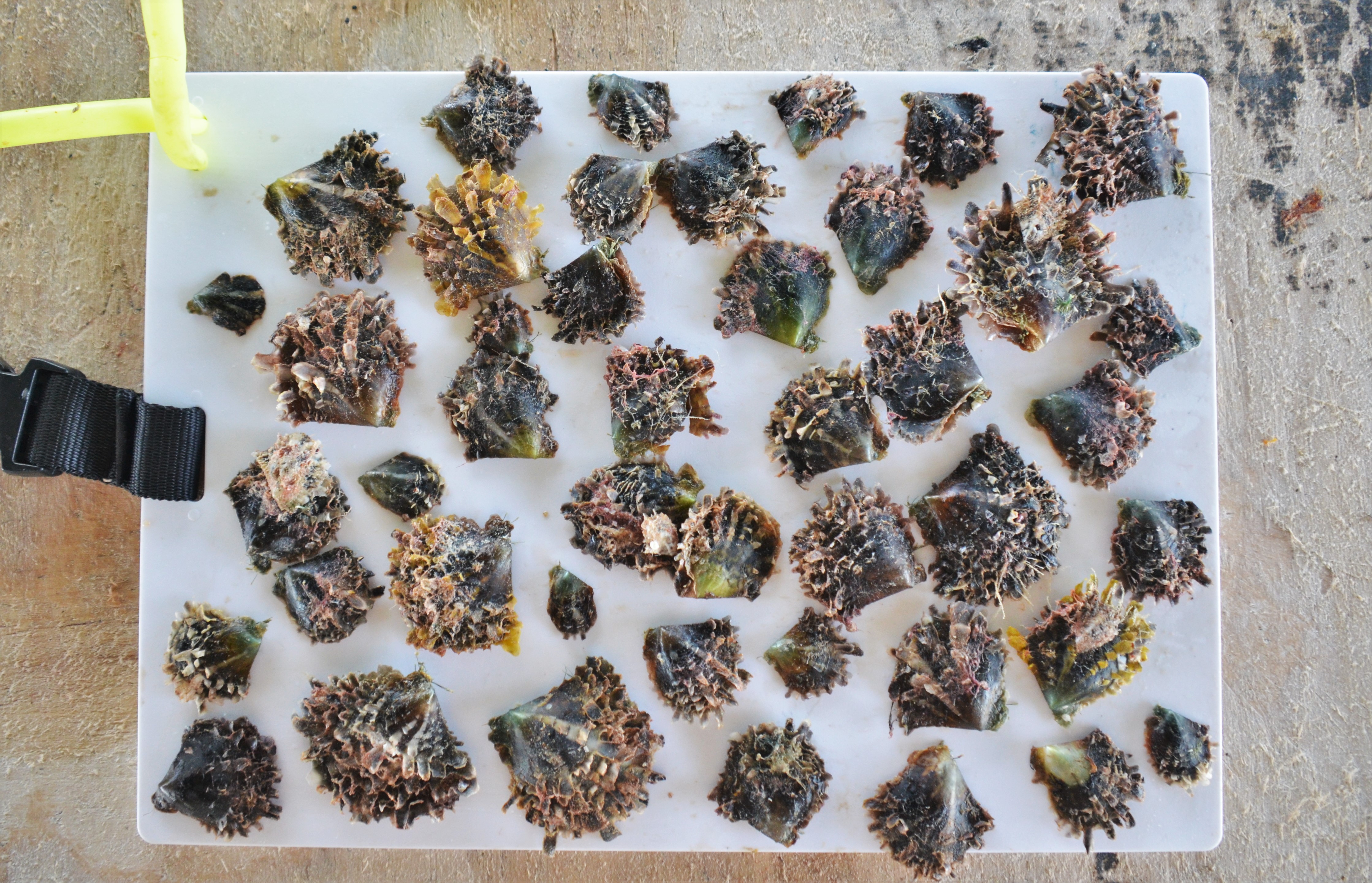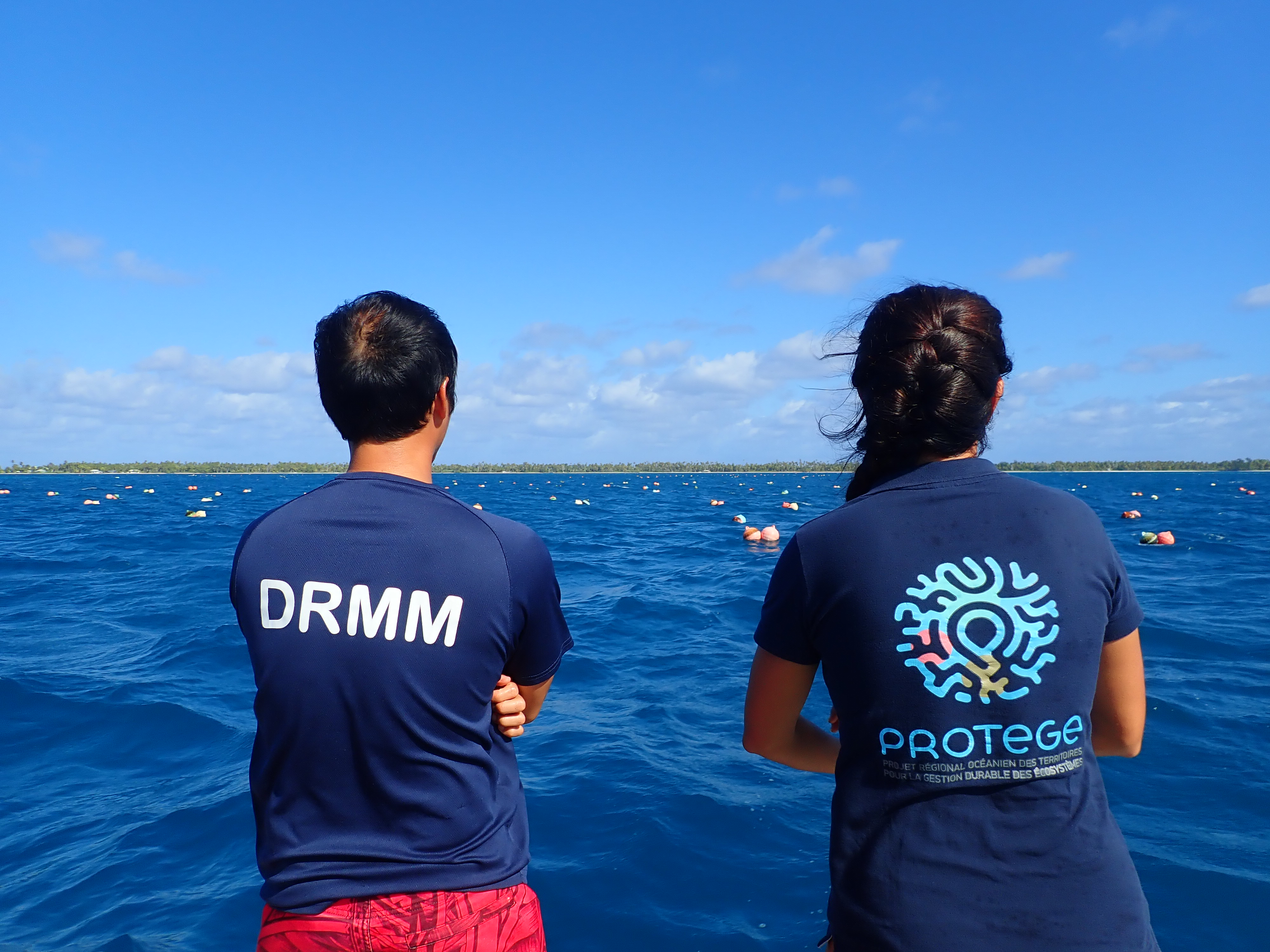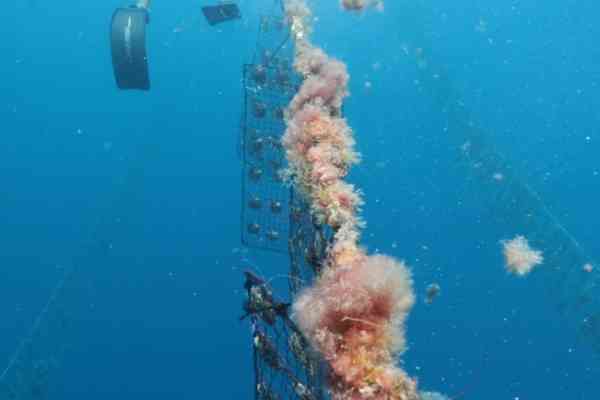Launched in 2018, RESOLAG, the Lagoon Observation Network of French Polynesia, has since 2020 been able to rely on the support of the PROTEGE Programme in its activities. Set up by the Marine Resources Department (DRM) to assess the health of the lagoons used for pearl culture, RESOLAG aims to improve understanding of the interactions between pearl oyster farms and the variations in lagoon water parameters.
Why an observation network?
Pearl farming is the second-biggest economic resource in French Polynesia. The quality of the pearls produced is highly dependent on oyster health as well as the quality of the lagoon growing environment. Understanding how lagoon parameter variations, such as temperature and the quantities of food resources available (phytoplankton) impact upon the good health of oysters is a prime sustainability concern for the sector. Also, for sustainable lagoon management, the accumulated impact of pearl farms in any single lagoon must be carefully monitored, because each lagoon has a specific stocking density over which the lagoon’s integrity can be compromised. The example of Tokoroa lagoon is highly eloquent, as this was one of the pioneering atolls in pearl culture development and was for a long time the most productive in terms of the quantities of spats collected and pearl output. Between 2013 and 2014 however a large scale vaiti’a (phytoplankton bloom) had a severe impact on the lagoon and caused a major oyster mortality event. Since then, Tokoroa lagoon has become unviable for pearl farming.
How can you monitor a lagoon?
Measuring instruments are deployed in the most important lagoons for the pearl culture sector. These instruments continuously record (1 measurement per hour) the water parameters (temperature, salinity, oxygen, turbidity and the quantity of chlorophyll a) and help monitor trends over long periods. This information collection activity is supplemented by the meteorological data made available by Météo-France, such as wind strength and direction, which also improve understanding of the impact of atmospheric events on the lagoon (water temperature, current). Lastly, the oysters themselves are lagoon health sentinels. Monitoring the health of a wild oyster population within a lagoon provides a genuine biological indicator of the health of the environment.

How can RESOLAG reduce the environmental impact of the pearl culture sector?
The data and information collected by the network as well as the accompanying research should allow a zoning approach to pearl farming in any particular lagoon. The main purpose is to identify the most favourable zones for collection and farming so as to optimise the way these zones are used by reducing the overall use of space by pearl culture in any particular lagoon.
As regards the stocking capacity of a lagoon, the Country Law regulating pearl farming has introduced the notion of an ‘ecological ceiling’, which restricts the surface area of lagoon permitted for pearl farming to 10%, 8% or 5% depending on whether the lagoon in question is ‘open’, ‘semi-open’ or ‘closed’. The real stocking capacity of a lagoon is however complex to assess. RESOLAG needs therefore to make it possible to define environmental indicators which are sensitive enough to detect a general deterioration in the state of the lagoon to be able to refine the individual values of the ecological ceilings.

What are the difficulties with a network of this kind?
French Polynesia extends over an area of 5.5 million square kilometres and pearl farming is conducted on some 30 islands involving 648 professionals, 349 of whom produce pearls. RESOLAG monitors 5 pearl-producing islands seen as the priorities. Some of these islands are very isolated, which makes monitoring work highly complicated. The deployment and maintenance of measuring instruments requires regular visits to the island’s concerned, at considerable cost, to which must be added the purchase cost of the instruments themselves.
In human resource terms, RESOLAG is implemented by single technical officer from DRM, who is fully funded by the PROTEGE Programme. To make the network sustainable on a long-term basis will be an important issue to resolve at the end of PROTEGE.

Defining relevant indicators for the status of a lagoon under the influence of pearl farming is a difficult stage. Each lagoon possesses its own specific features and, over such a vast area, the environmental factors at play vary considerably from region to region.
The network is constantly evolving at the present time to improve the quality of the data collected as compared with the costs generated. Thanks to the improvement of existing technologies, new lagoon monitoring tools are today under consideration and will make it possible to reduce the costs of data acquisition and collection by satellite and manufacture instruments at lower cost.
